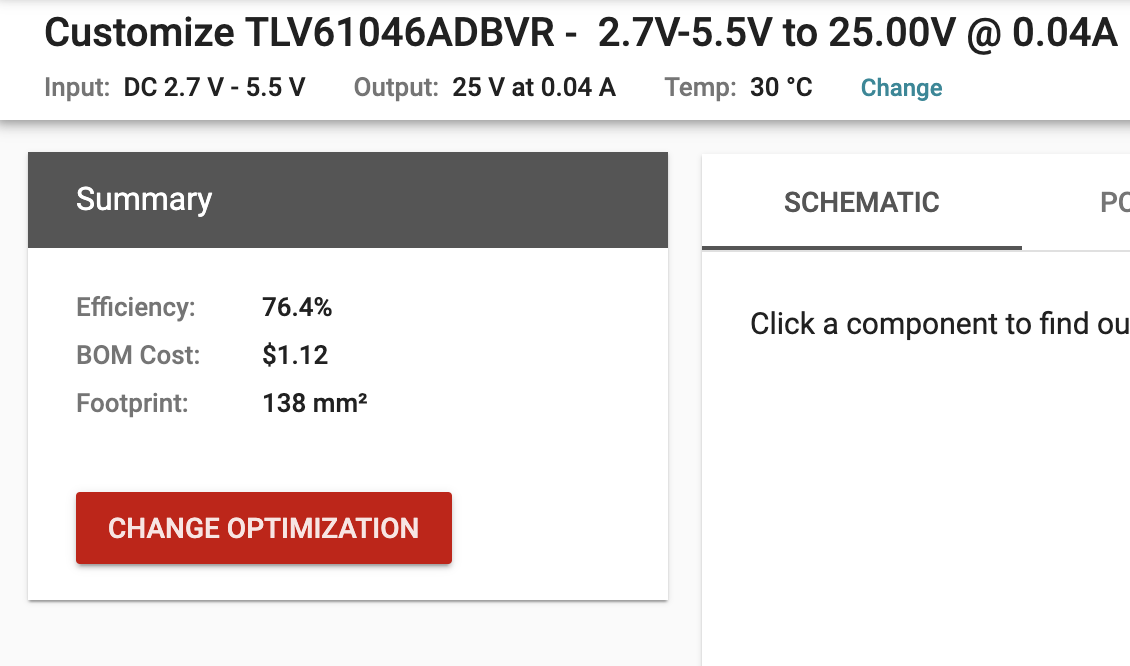Other Parts Discussed in Thread: TLV61046,
Hi, guys. The input will be
Lithium Ion Polymer Battery - 3.7v 500mAh
in order to create 25V (max current 40mA).
3.7V to 25V is quite a big jump. So I was wondering
considering cost / footprint size / safety / efficiency / etc
should I connect multiple boost converters to create 25V?







